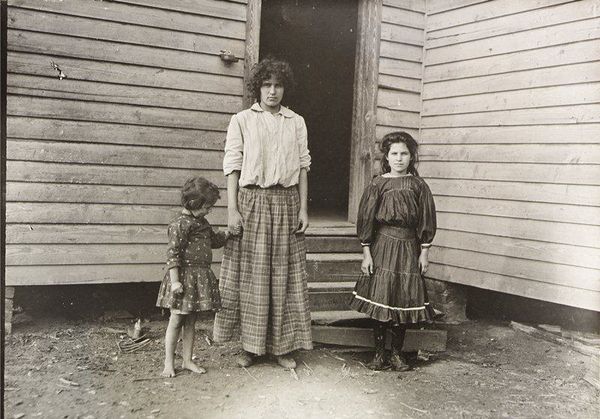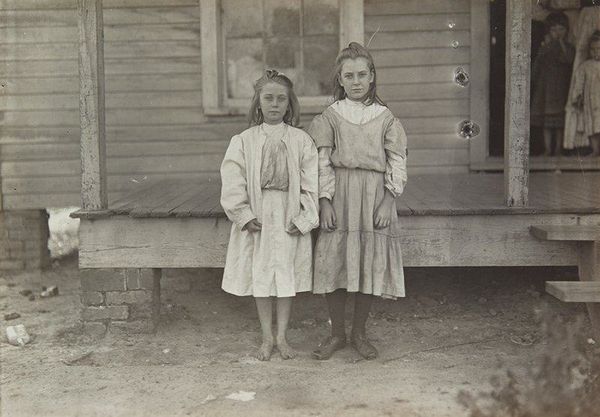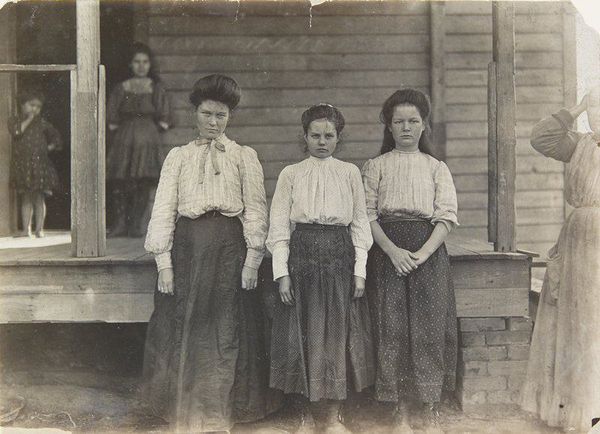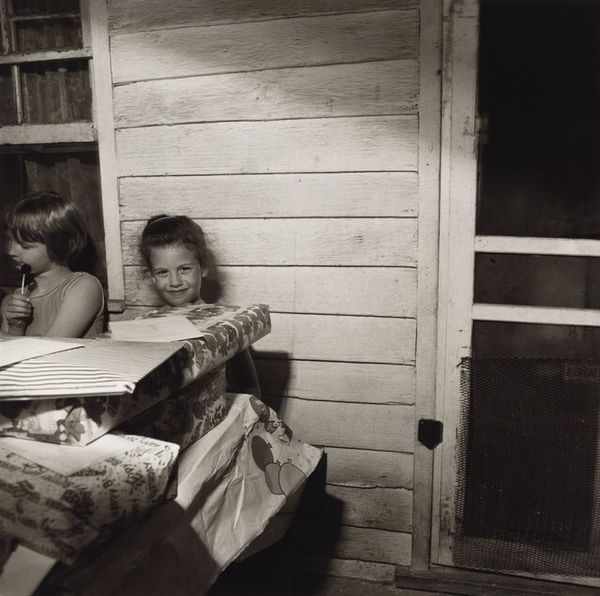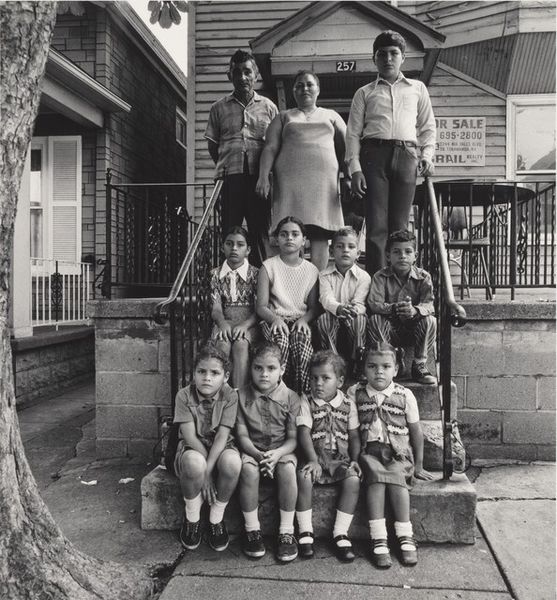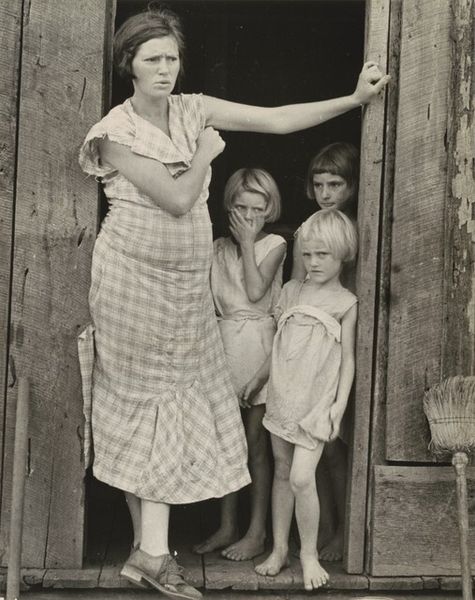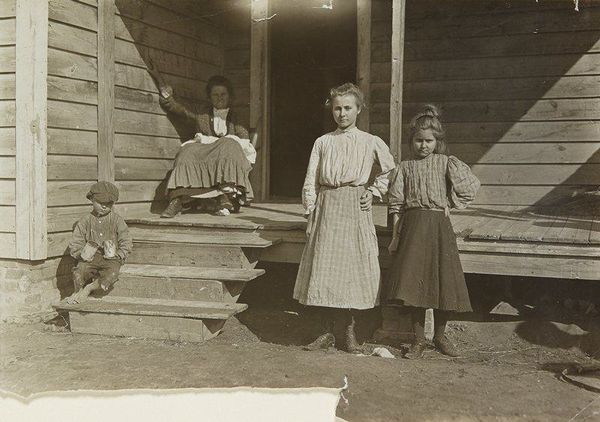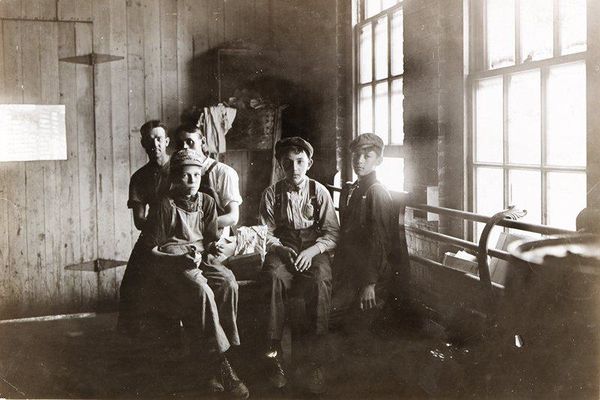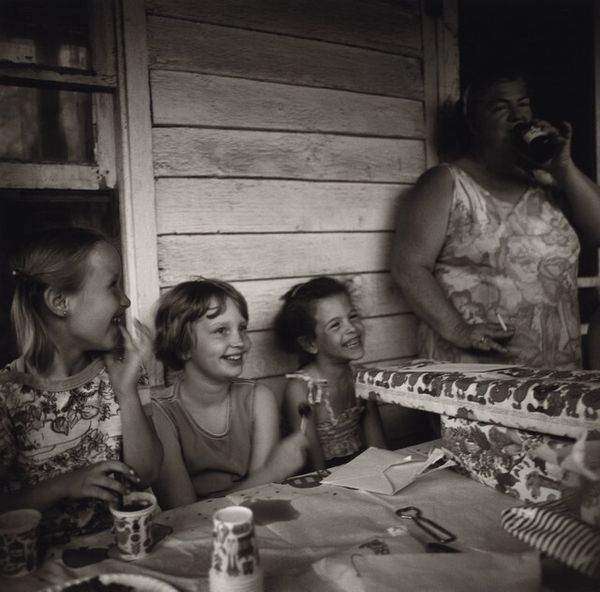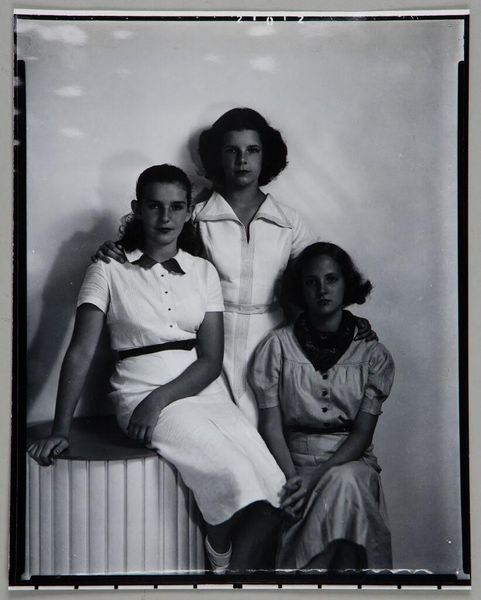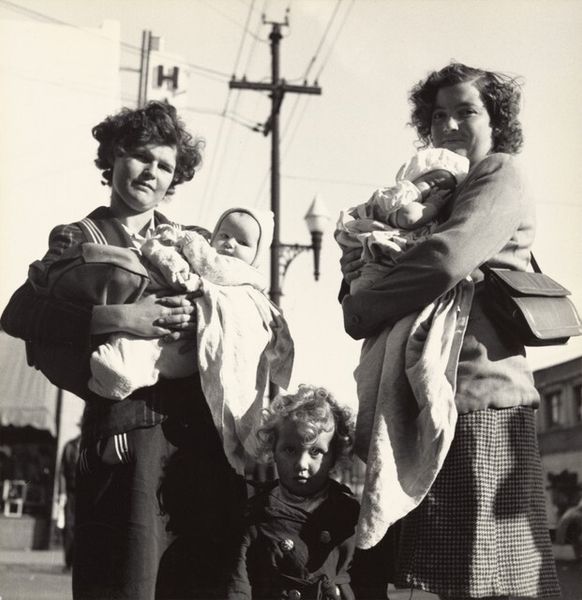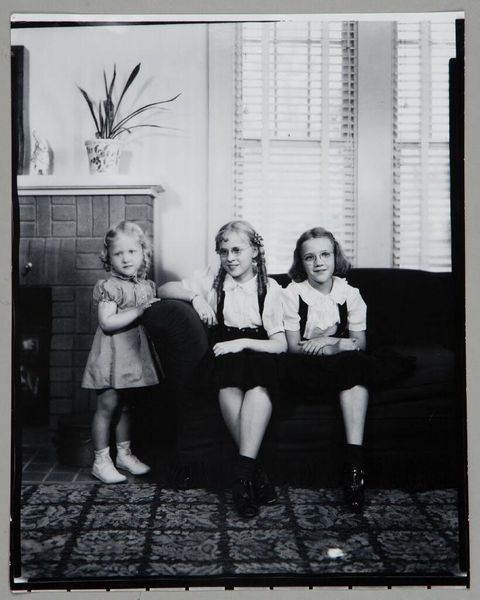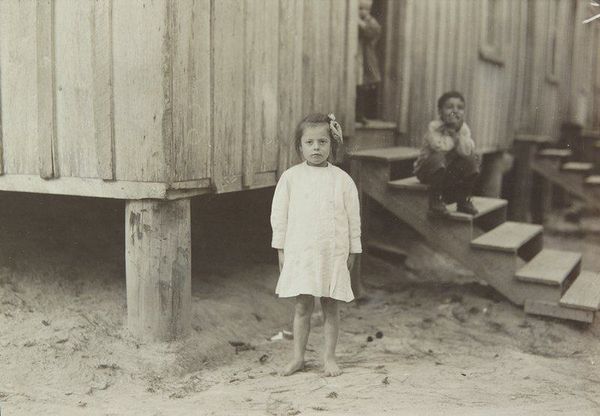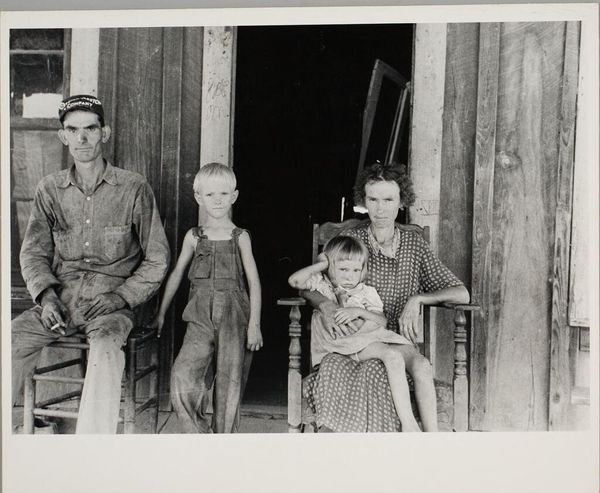
photography, gelatin-silver-print
#
portrait
#
black and white photography
#
photography
#
historical photography
#
black-arts-movement
#
group-portraits
#
black and white
#
gelatin-silver-print
#
monochrome photography
#
monochrome
#
realism
Dimensions: image: 17.1 x 16.1 cm (6 3/4 x 6 5/16 in.) sheet: 25.3 x 20.3 cm (9 15/16 x 8 in.)
Copyright: National Gallery of Art: CC0 1.0
Curator: I find this photograph so compelling, such raw emotion. It’s an untitled work, number three from Milton Rogovin’s Appalachia series, taken sometime between 1962 and 1971. He worked primarily with gelatin-silver prints, didn't he? Editor: Yes, he did. It certainly grabs your attention. I'm struck by the almost oppressive geometry – the vertical lines of the dilapidated porch frame against the girls’ stoic expressions. The high contrast contributes to the serious tone of the image. Curator: Absolutely. Rogovin dedicated his life to documenting marginalized communities, particularly the working class. In this photograph, we see four young girls. They are standing on a porch, their expressions, as you noticed, quite somber. Their social circumstances speak volumes. Editor: Precisely. One must consider the socio-economic climate of Appalachia during that time, struggling with poverty and lack of opportunity. Rogovin’s work, often associated with the Black Arts Movement, served as a form of social commentary. The subjects return your gaze directly, an unspoken challenge to the viewer. Curator: Let’s look closely. The formal composition—the way he arranges these figures, placing them within this tight space, enhances the image's emotional impact. Semiotically, the textures communicate the broader experience of poverty. What do we glean from the materiality of the print itself? The grain, the depth of blacks? Editor: The contrast Rogovin achieves emphasizes both the grittiness and the humanity. Consider how galleries at the time largely ignored art depicting such bleak social realities. His decision to focus on those outside mainstream society highlights a certain power dynamic inherent in art. By focusing on the nuances, Rogovin encouraged empathy within the socio-political contexts of the period. Curator: It’s an image ripe with these kinds of contradictions. What emerges is that it makes you examine your values when facing subjects of societal neglect. Rogovin seems to make a statement about the invisible aspects of reality, making this photograph visually provocative and intellectually complex. Editor: His work challenged societal expectations. Seeing it here today serves as an important reminder of the continued struggle for equality, offering us more than mere historical context—it urges critical self-reflection.
Comments
No comments
Be the first to comment and join the conversation on the ultimate creative platform.
